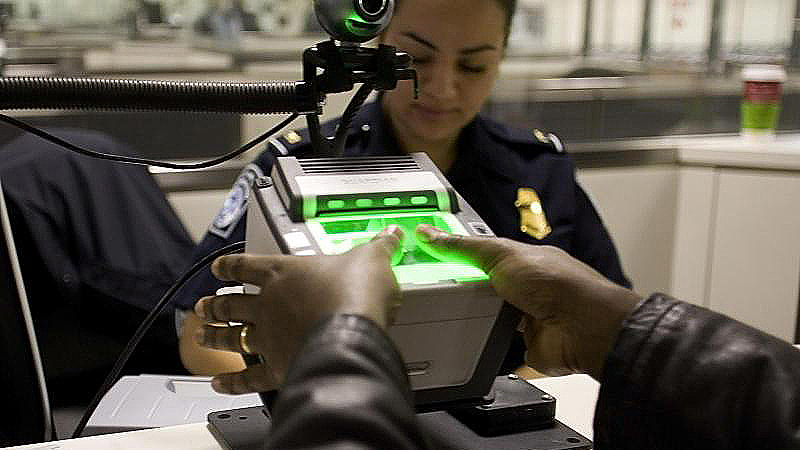
The U.S. Customs and Border Protection (CBP) recently announced its new Information Technology (IT) Strategy for fiscal years (FY) 2023 – 2027, which will focus on refreshing the “alignment and execution” of the agency’s mission.
The much-anticipated multi-year strategy will utilize its $1.8 billion in funding – the largest amount in the Department of Homeland Security (DHS) – to elevate the agency’s cybersecurity abilities and defenses to safeguard the American people.
“Each year, our responsibility and role as CBP OIT continues to expand. The objective of this strategy is to refresh our alignment and execution in support of our vision and mission,” stated Sanjeev Bhagowalia, assistant commissioner at the Office of Information Technology (OIT) and chief information officer (CIO) within CBP.
The plan explicitly details six different key areas that the agency will work on to better align its cybersecurity and IT strategies.
Goal One: Mission Infrastructure
The first goal outlined in the strategy is the agency’s focus on its own infrastructure and support services, such as its cloud and customer service abilities.
“Continuously provide innovative, near-real time infrastructure capabilities to ensure a secure, reliable, and scalable IT Infrastructure at the speed of CBP’s mission through collaboration with application teams and our Trusted Partners to accelerate and optimize delivery,” the strategy says.
Under this goal, the agency will also be working on establishing a “modern integrated network with edge-to edge security” that will converge data while reducing on-premises, obsolete voice systems.
Goal Two: Mission Applications
The second goal on the bucket list focuses on scaling up the CBP’s applications development and digital experience, while simultaneously enhancing their data management.
“In the future, OIT will help build mission-aligned applications that are more reliable and scalable, leveraging a domain-driven design to access centralized shared services based on user requirements,” the document says.
In the past, CBP has suffered from being able to use applications and software tools that were found not to be easily scalable for the agency’s needs.
Goal Three: Trusted Partners
The third part of the strategy looks into establishing and administering a Trusted Partner (TP) Program that will help CBP respond to the technology needs of the agency’s partners and anticipate, influence, and deliver on expectations by understanding needs sooner.
“OIT’s success depends on teaming with trusted partners and customers. Understanding and respecting what each group brings, partnering with one another to co-create and deliver solutions, and setting and managing expectations enables us to deliver exceptional services to meet their mission needs,” states the agency.
The program is needed so that various government law enforcement agencies can have better data transfer and work cohesively.
Goal Four: Cybersecurity
It is no secret that the agency is looking to beef up its cybersecurity apparatus. The difference found in the new strategy includes closing gaps in its “increasingly sophisticated and persistent threat actors and CBP’s adoption of the right technology, people, and processes.”
“It is vital that every CBP employee, stakeholder, and partner fully recognize and appreciate the direct connection between sound cybersecurity practices and the national security of the United States,” the agency says.
The evolving threats that the CBP faces include ransomware, supply chain threats, and phishing campaigns that can cripple the agency’s and its partners’ capabilities.
“We look forward to our continued partnership as the Office of Trade implements new strategies to tackle key enforcement priorities like forced labor, supply chain resiliency, and sustainability,” stated AnnMarie Highsmith, executive assistant commissioner of the Office of Trade at the CBP.
Goal Five: Enterprise IT Governance
The enterprise and its governance that the CBP outlines it will focus on include steps to establish necessary governance policies and communications mechanisms.
“The IT Governance framework is in progress to align our IT strategy with our business strategy. OIT will articulate integral connectivity between ongoing OIT Governance, Risk, and Compliance workflows and support any gaps along the way,” states the agency.
The new governance model in the strategy embeds risk assessment into the decision-making process while concurrently adhering to the rules and regulations.
Goal Six: CIO Business Operations
The plan concludes by making it a priority to work on improving the integration of CIO business operations and services to be able to deliver OIT customers with a common shared user experience in a holistic fashion.
“OIT established a MGD to integrate strategy, acquisition, budgeting, and workforce functions to improve holistic business services to OIT organizations and our Trusted Partners. OIT’s Management and Governance Directorate provides the systems, principles, and processes by which OIT is administered, conducting business with integrity and fairness, to deliver solutions at the speed of the CBP mission,” the strategy says.
Within this goal, the agency will also look to mature the brokerage of enterprise IT business operations data and information to push for better evidence-based decision-making as well as improve the intelligence capabilities.
